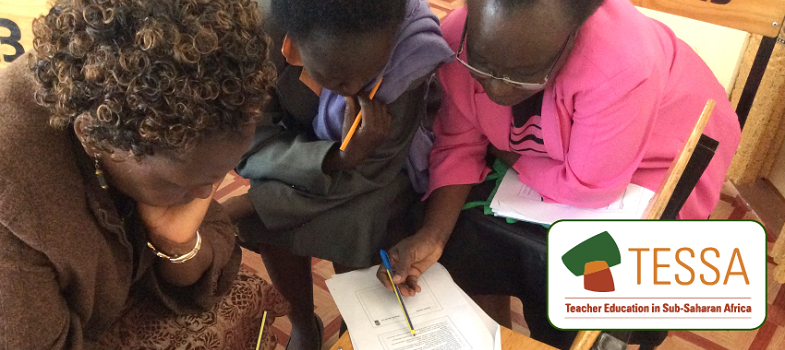Resource 3: How to conduct a class survey
![]() Background information / subject knowledge for teacher
Background information / subject knowledge for teacher
Conducting a survey is a very useful way for your pupils to practise many different skills. These include:
- asking questions;
- recording different types of information;
- comparing answers;
- practising speaking and writing;
- finding out more about each other.
However, you need to think and plan very carefully to organise a survey in your class, and also how you will explain it to your pupils.
1. What is a survey?
A survey is a way of gathering information from many different people on a particular topic. It can explore a range of opinions in a group, and help to find out more about individuals.
To gather the information, a survey usually uses a chart to record the responses. The chart below is one example where the answers could be recorded easily and quickly by using a Y for a yes and and N for a no in each box:
| Name: | ……Faith…… | ………… | …………. | …………. | ……….. |
|---|---|---|---|---|---|
| 1. Do you like yams? | |||||
| 2. Do you like…? | |||||
| 3. Do you like…? |
A survey is an interesting way for pupils to practise finding out information for themselves.
Because a survey has many different stages, it can take a whole lesson to complete – or longer, if pupils have to ask people outside school. Providing time for the data collection to happen is especially important so that everyone is involved and able to see the process in action.
2. Choosing your topic
When deciding to do a survey with your class, you need to think carefully about what the survey will be about – what information will you find out? Clearly, the survey should be linked in some way to the topic in class. For example, if teaching about similarities and differences, a survey about the different foods people like might be an idea. The pupils will be more involved if they suggest ideas themselves.
It is important at this stage to think about the skills that your pupils need to develop and practise. Design a survey that matches your learning objectives.
3. Writing the questions
In any survey, it is good for the pupils to think of and write their own questions – each pupil or group of pupils should come up with their own ideas. But you need to think about how you will organise the pupils to do this. Pair or group work is good if it is the first time that they have done this, as then they can check each other’s work.
To help pupils do a survey you may need to decide (by yourself or with the pupils):
- how they are to work e.g. individually, in pairs, or in groups;
- how many questions they should write (3–5 is usually enough);
- what types of questions they should ask (provide some examples yourself and ask them for some more examples to check that they understand);
- how much time they will have to write the questions (10–15 minutes should be enough for 3–5 questions)
It is important to do all the above with the whole class together before they start working. As they work, go round and monitor their work to check that they really have understood the task.
The type of question they will write depends on the kind of information that they want to find out. For example, if the idea of the survey is to gather information about the numbers of pupils who think/like/do something, then they might write ‘Yes/No’ questions: e.g. ‘Do you like football?’
However, if the idea of the survey is to gather information about the range of interests in the class, then they might write ‘open-ended’ questions: e.g. ‘What sports do you like?’ They will have to think of ways to record the answers.
4. Asking the questions
Every pupil should practise asking and answering questions on a one-to-one basis. Think carefully about how you would organise this. Here are a few suggestions:
- Pupils do not need to speak to everybody in the class. This would take too much time and also be very repetitive. A sample of five pupils may be enough, and maybe no more than ten pupils – depending on the size of your class.
- If they wrote their questions in pairs or groups, they shouldn’t ask each other the questions. Instead, suggest they ask others in the class or school.
Organising pupils into groups to do the survey can be useful if you have a large class. You also need to ensure that all pupils are involved in writing and asking the questions. (See Key Resource: Using group work in your classroom [Tip: hold Ctrl and click a link to open it in a new tab. (Hide tip)] .)
5. Recording the answers
The pupils need to be clear about the responses they are recording and keep these as short as possible.
For example, if they are asking open-ended questions, they can write down one-word answers: Q: What sports do you like? A: football/running/jumping.
If they are asking Yes/No questions, they can write Y or N as an answer.
If they are gathering information on numbers, they could just keep a tally, with one mark representing one person: e.g.
| Favourite sports: | Football | Running | Jumping | Catch |
|---|---|---|---|---|
| Numbers: | IIIII | IIIIII | III | IIII |
Again, plan this carefully, and explain it to the pupils before they gather their data. To check they understand, you could ask them to explain it to you, too.
6. Comparing answers
After the pupils have asked questions and recorded the information, it is good for them to talk in pairs or groups about their data and compare answers. This data can be used to discuss people’s likes and dislikes and they could draw graphs of the results to make it easy to see the differences and discuss what they mean.
Displaying their findings or asking them to write about their findings will help you understand their thinking and give them the opportunity to think more deeply about the data.
Resource 2: Asking questions about feelings



